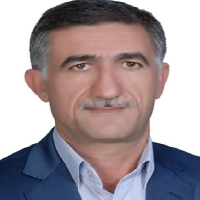Price liberalization and household consumption pattern changes in Iran: Integration of input - output tables and household demand system
Author(s):
Abstract:
The prices of energy and major foods have sharply increased after implementing targeting subsidies scheme on these commodities since mid-2010 in Iran. In this study, the rate of changes in prices of energy carriers and food items were determined based on two options for the scheme direction, namely the option of bringing domestic prices to the border prices (for energy carriers) and eliminating direct subsidies, and the option of calculating real domestic prices in 2008 by elimination of subsidies (direct and indirect) paid. Then, effects of price liberalization on the consumption pattern were analyzed through integrating household demand systems in a Leontief input-output price model. Based on the findings, the highest changes of base and purchasing prices are related to the different types of flour and other grain mill products. The highest and lowest increases in the price index have been achieved in the price index of food, beverages and tobacco group, and clothing and footwear group respectively. While the expenditure shares of food, beverages and tobacco, housing, water, electricity, gas and other fuels, transport and communication and furnishings, household equipment and routine household maintenance groups increased, those of other groups have gone down. Since more than 70 percent of households’ expenditures are devoted to food, beverages and tobacco, housing, water, electricity, gas and other fuels, transport and communication groups, increasing the shares of these groups and decreasing the shares of other groups can cause more reduction on allocated budget to recreational, cultural and health items, and this could be an undesirable change in consumption pattern. But since the effect of budget on consumer behavior is higher than price effects, it can be concluded that this negative effect will be compensated if changes in consumption pattern be accompanied with increasing household budget. To realize such condition, it is recommended that the revenues earned by Iranian government, after cutting energy and food subsidies to be invested in infrastructure and development projects and to empower private sector, till the optimal allocation of resources is being provided, and to increase household's income and reduce negative effects of price liberalization on the other hand.
Language:
Persian
Published:
Agricultural Economics, Volume:6 Issue: 3, 2013
Page:
53
magiran.com/p1186164
دانلود و مطالعه متن این مقاله با یکی از روشهای زیر امکان پذیر است:
اشتراک شخصی
با عضویت و پرداخت آنلاین حق اشتراک یکساله به مبلغ 1,390,000ريال میتوانید 70 عنوان مطلب دانلود کنید!
اشتراک سازمانی
به کتابخانه دانشگاه یا محل کار خود پیشنهاد کنید تا اشتراک سازمانی این پایگاه را برای دسترسی نامحدود همه کاربران به متن مطالب تهیه نمایند!
توجه!
- حق عضویت دریافتی صرف حمایت از نشریات عضو و نگهداری، تکمیل و توسعه مگیران میشود.
- پرداخت حق اشتراک و دانلود مقالات اجازه بازنشر آن در سایر رسانههای چاپی و دیجیتال را به کاربر نمیدهد.
In order to view content subscription is required
Personal subscription
Subscribe magiran.com for 70 € euros via PayPal and download 70 articles during a year.
Organization subscription
Please contact us to subscribe your university or library for unlimited access!


